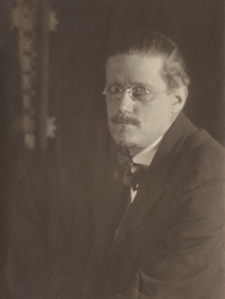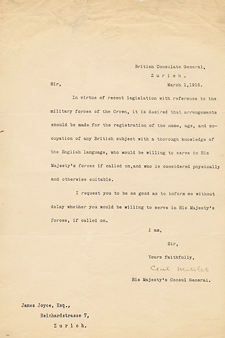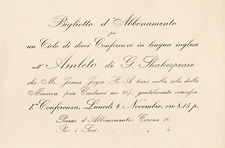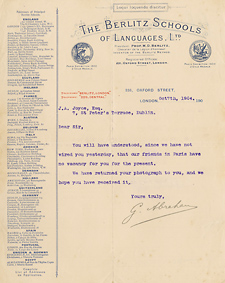



Exile and Struggle
Joyce left Ireland for good in October 1904, together with Nora Barnacle, who was to be his companion for life. Joyce foresaw that the kind of writing he wished to do would be very difficult in Ireland, and exile suited his image of himself as a man apart. The Joyces settled first in Pola (now Pula, Croatia), south of Trieste. Both Pola and Trieste were at that time part of the Austro-Hungarian Empire. Over the next sixteen years the Joyces would circulate among Pola, Trieste, and Zurich, with a brief stint in Rome. During this time Joyce supported himself through language tutoring, lectures, and for a brief time, writing articles for a Triestine newspaper, Il Piccolo della Sera.
Living abroad may well have intensified Joyce’s appreciation of the intricacies and delights of language. Trieste in particular was a European crossroads, inhabited by people of multiple nationalities, and a linguistic melting pot. The languages spoken there included Armenian, English, Spanish, German, Turkish, Sicilian, Maltese, Hungarian, Slovenian, Croatian, Czech, Greek, and several different dialects of Italian. Joyce’s style in Finnegans Wake has been described as taking its inspiration from the Triestine dialect, a mixture of many languages.
Items Exhibited in the Exile and Struggle Section
James Joyce, Seated. Zurich, ca. 1914. [view]
Gelatin silver print photograph
Courtesy of the Poetry Collection, SUNY at Buffalo
James Joyce. Letter to the Joyce Family from Paris. December 6, 1902.
James Joyce. Workbook in Italian and German. 1904–ca. 1919.
Sir Cecil Hertslet, Consul General of Great Britain. Letter to James Joyce. March 1, 1916. [view]
Lucia and Giorgio Joyce. Trieste, 1910.
Gelatin silver print photograph
Courtesy of the Poetry Collection, SUNY at Buffalo
Ticket to a series of lectures on Hamlet, to be given by James Joyce. November, 1912. [view]
Notice of the proclamation of the Irish Republic. Neue Zürcher Zeitung. January 22, 1919.
The Berlitz Schools of Languages, Ltd. Letter to James Joyce. October 7, 1904. [view]